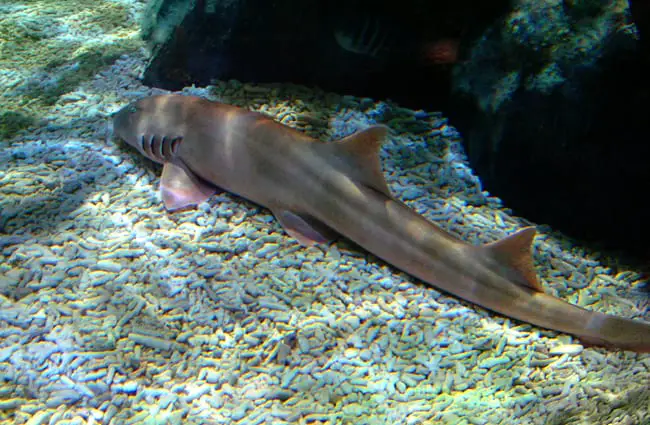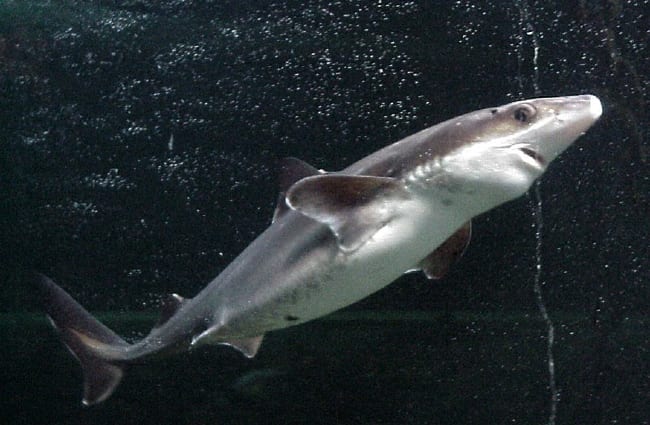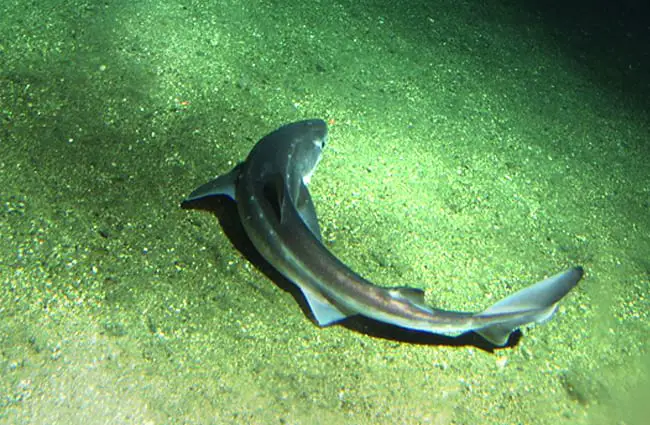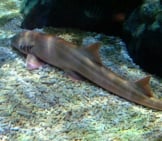Dogfish are a number of species of sharks in the Squalidae family. They have venomous spines, something that no other shark species have. While there are quite a few different species of this shark, the most well-known species is the spiny dogfish. Because of this, we will focus this article upon this species, rather than the entire family of sharks. Read on to learn about the dogfish.
Description of the Dogfish
This shark species is long and lanky, with a relatively small tail fin. They have two spines along their backs that contain mild venom, and they use these spines to protect themselves from predators. Females are longer than males. Males grow to be between 2.6 and 3.3 ft. long, while females can grow up to 5.2 ft. in length.
Interesting Facts About the Dogfish
Don’t let these smaller sharks fool you … Dogfish might not be as intimidating as some of their larger cousins, but they are incredibly interesting creatures. Learn more about these little sharks below.
- Long Lived – Researchers believe this species may be capable of living up to 100 years or more! Female dogfish do not reach sexual maturity until about 20 years of age, suggesting that they have a long lifespan.
- “Spiny” – The first half of the spiny dogfish’s name is pretty self-explanatory. It gets the name “spiny” because it has sharp spines in front of each dorsal fin. If a predator grabs it, it arches its back, pushing the spines into the predator’s skin or mouth.
- “Dogfish” – The term “dogfish” comes from the behavior of this species. Large groups of these small sharks will come together to hunt, and can be very aggressive in pursuit of prey. This group feeding, and dog-like tenacity is where they get their name.
- Fish and Chips – In Europe, if you order “fish and chips,” it is highly likely that you are actually eating dogfish and chips. The international demand for their meat is quite high. This fishing pressure has caused a sharp decline in their populations.
Habitat of the Dogfish
For the most part, these sharks prefer shallow, coastal waters. However, researchers have found them at depths up to 3,000 ft. beneath the surface. Rather than swimming in the open ocean, they prefer to range along the sea floor in search of food. Unlike many other shark species, these sharks will also range into subarctic waters. They reside in temperate and subarctic habitats worldwide.
Distribution of the Dogfish
This species ranges near the coastline in any temperate or subarctic ocean across the world. Basically, you can find them anywhere but the equator and the poles. They reside along the southern coasts of South America, Africa, and Australia. Their range also extends up the entire coast of eastern North America, into southern Greenland. They also live throughout the coasts of Europe.
Diet of the Dogfish
Much like the dogs from whom they get their name, these sharks are not particularly picky eaters. They will pack up and feed upon just about anything they can sink their teeth into. They are notoriously aggressive and relentless predators. Newborns are even known to pursue prey several times their own size. They eat fish, squid, crabs, other crustaceans, and invertebrates.
Dogfish and Human Interaction
Cultures worldwide utilize these sharks in their commercial and recreational fisheries. Because of this, the worldwide population of this species is decreasing. Overfishing is extremely detrimental to this species, because females cannot breed until they reach around 20 years of age.
This means that the number of animals reaching adulthood to replenish the population is drastically low. Because of this, the IUCN lists this species as Vulnerable. A number of initiatives have begun to control the harvest of dogfish in an attempt to reduce the population loss.
Domestication
Humans have not domesticated dogfish in any way.
Does the Dogfish Make a Good Pet
These sharks do not make the best pets. They have an incredibly long lifespan, and are surprisingly social creatures. Because of this, they are a pretty big commitment. Even though they do not grow excessively large, they still require obscenely large tanks to swim in. All of this equates to lots of cost, and a pretty impractical pet.
Dogfish Care
As smaller, bottom dwelling species, these sharks are generally more successful in aquariums than their larger counterparts. You can house them in tanks with other sharks of similar size, but they will usually eat any smaller fish or crustaceans you keep with them.
These sharks are social, and you can keep several of them together in the same tank. Keeping these sharks in aquariums allows scientists to research their behavior and reproductive strategies to better understand their wild counterparts.
Behavior of the Dogfish
These sharks are one of a handful of shark species that are quite social. Along with lemon sharks, blue sharks, and hammerheads, dogfish will congregate and even hunt in packs. Their behavior is voracious, and the group will eat just about anything they can catch. The groups will spread out and sweep an area, chasing any prey they come across into the open.
Reproduction of the Dogfish
Male dogfish begin to reproduce at around 11 years old, and females at around 20 years old. They are ovoviviparous, which means that they develop the eggs within their uterus, and give live birth. This species has possibly the longest gestation period of any vertebrate animal. The female will gestate for as long as 2 years before giving birth. That’s longer than an African elephant!













![Red Angus Closeup of a beautiful Red Angus cowPhoto by: U.S. Department of Agriculture [pubic domain]https://creativecommons.org/licenses/by/2.0/](https://animals.net/wp-content/uploads/2020/03/Red-Angus-4-238x178.jpg)












![Red Angus Closeup of a beautiful Red Angus cowPhoto by: U.S. Department of Agriculture [pubic domain]https://creativecommons.org/licenses/by/2.0/](https://animals.net/wp-content/uploads/2020/03/Red-Angus-4-100x75.jpg)

